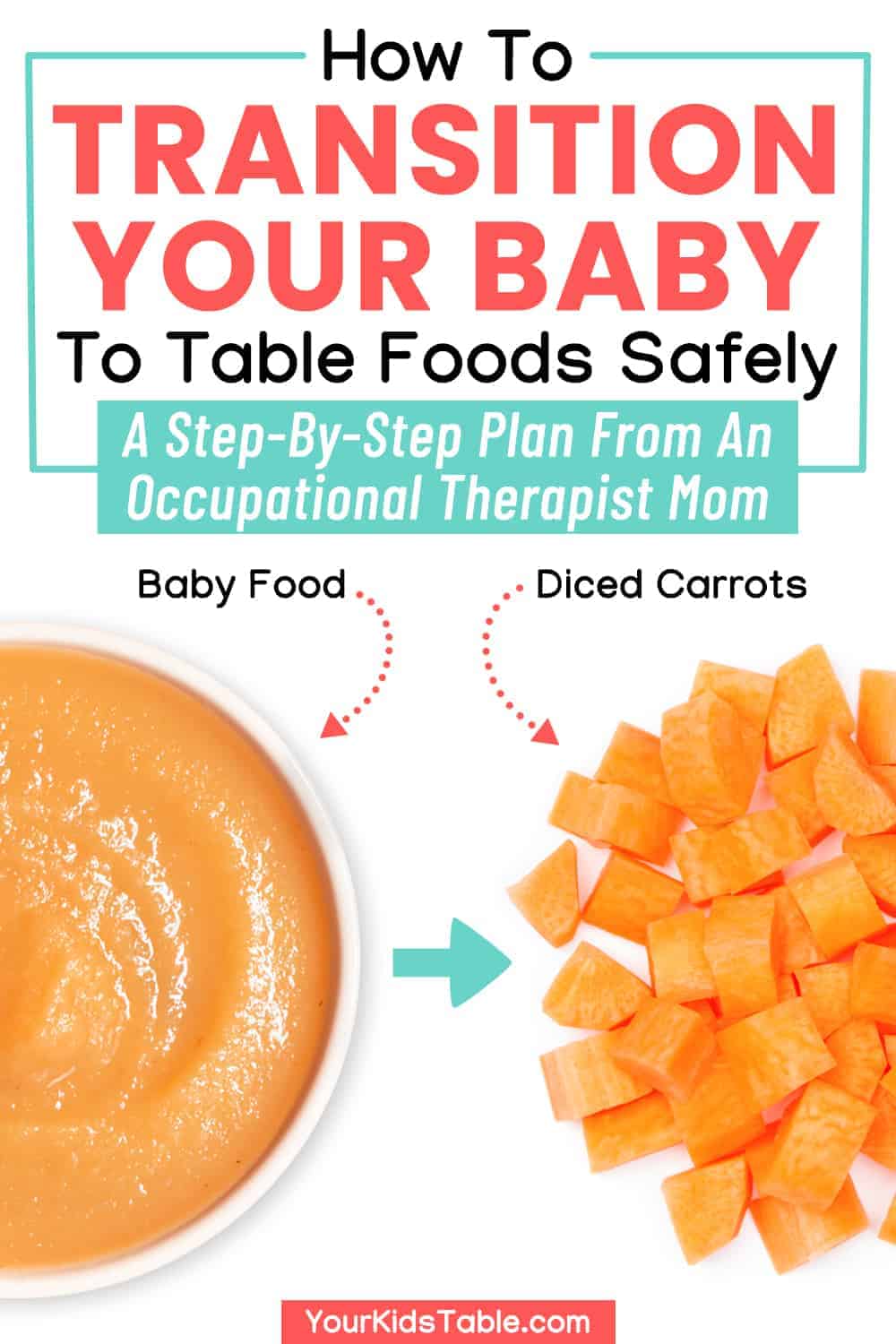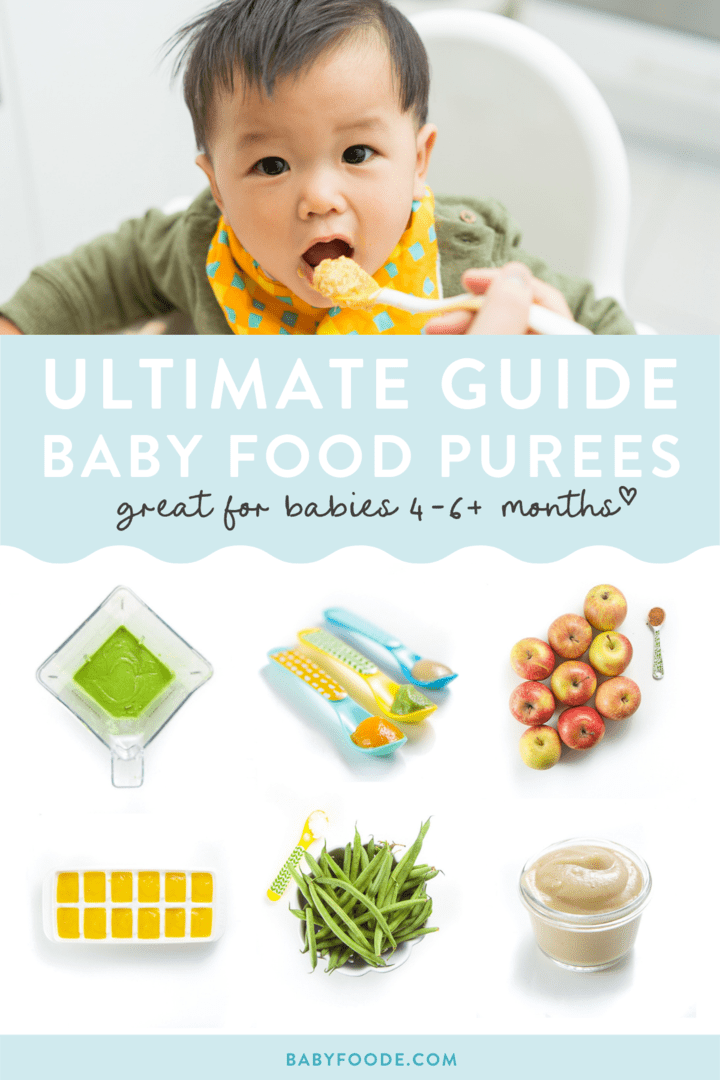Transitioning your baby to solid foods can be daunting, but with the right tips, it can be a smooth process. By introducing one new food at a time, ensuring the food is age-appropriate, and being patient with your baby’s preferences, you can make the transition to solid foods a positive experience.
Remember to watch for any allergic reactions and consult with your pediatrician if you have any concerns. With these simple strategies, you can ease your baby into the exciting world of solid foods and set the stage for healthy eating habits.
Introducing solid foods to your baby is a significant milestone, but it can also come with its challenges. As a parent, you may have questions and concerns about when and how to start the process. This article will provide you with valuable tips to help make the transition to solid foods a positive and seamless experience for both you and your baby. From introducing new foods gradually to being mindful of potential allergies, these tips will guide you through this important stage of your baby’s development.
Signs Of Readiness
Introducing solid foods to your baby is an exciting milestone, but knowing when they’re ready to make the transition is crucial. Keeping an eye out for the signs of readiness can help make the process smoother for both you and your little one.
Physical Readiness
Babies typically exhibit physical signs when they’re ready for solid foods. Some of these signs include:
- Head control: Being able to hold their head steady while sitting in an upright position.
- Sitting up: The ability to sit up unassisted, which demonstrates better control over their body and neck muscles.
- Loss of tongue-thrust reflex: Lessening of the reflex that automatically pushes food out of their mouth.
Developmental Readiness
Aside from physical readiness, there are developmental signs that indicate your baby may be ready for solids:
- Increased curiosity: Showing interest in what you’re eating and reaching out for food.
- Chewing motions: Mimicking the chewing motion, even if they don’t have teeth yet.
- Greater appetite: Displaying dissatisfaction with breast milk or formula alone and wanting more.

Credit: yourkidstable.com
Choosing The Right Foods
Baby’s first foods set the stage for their lifelong relationship with food, making it crucial to introduce a variety of healthy options early on. When transitioning your little one to solids, consider the following tips to ensure a smooth and enjoyable experience.
Starting With Single-ingredient Purees
When starting solid foods, begin with single-ingredient purees such as mashed avocados, bananas, or sweet potatoes. These simple, easy-to-digest options allow babies to become accustomed to new textures and flavors without overwhelming their developing digestive systems.
Introducing Allergenic Foods
Introduce allergenic foods early on to help prevent allergies. Common allergens such as peanut butter, eggs, and dairy can be gradually introduced to your baby’s diet, starting with small amounts and monitoring for any adverse reactions. It’s important to consult with your pediatrician when starting allergenic foods to ensure a safe and appropriate approach.
Considering Baby-led Weaning
For parents interested in a different approach, baby-led weaning encourages the introduction of soft, easily graspable finger foods, allowing babies to self-feed and explore various tastes and textures. This method promotes independent eating skills and fosters a positive relationship with food from an early age.
Establishing A Routine
Transitioning your baby to solid foods is an exciting milestone, but it can also be a time of uncertainty and even frustration. One of the key elements to making this transition a success is establishing a solid feeding routine. By setting a feeding schedule and creating a relaxing environment, you can help your little one develop healthy eating habits and make mealtime a positive experience for both of you.
Setting A Feeding Schedule
Creating a consistent feeding schedule for your baby is essential for their overall development and nutrition. It helps them understand when to expect food, which can reduce fussiness and make mealtimes more enjoyable. Here are some tips for setting a feeding schedule:
- Offer meals at regular intervals throughout the day, such as breakfast, lunch, and dinner, with 2-3 snacks in between.
- Start with small, frequent meals and gradually increase the amount and variety of food as your baby’s appetite grows.
- Observe your baby’s hunger cues, like sucking on their fingers or showing interest in food, and plan meals accordingly.
Creating A Relaxing Environment
The environment in which your baby eats can greatly impact their appetite and willingness to try new foods. By creating a relaxing and distraction-free setting, you can help your baby focus on their meal. Here are some ways to create a calming environment:
- Choose a comfortable and quiet space for mealtime, away from loud noises and other distractions.
- Use a high chair or a designated feeding area to establish a dedicated eating space.
- Turn off screens and devices to eliminate visual distractions.

Credit: www.pregnancybirthbaby.org.au
Gradual Progression
Transitioning your baby to solid foods can be made easier with gradual progression. These tips will help ensure a smooth and successful transition for your little one.
Every child is unique, and so is their journey when it comes to transitioning to solid foods. Gradual progression is key during this exciting time, as it allows your baby to explore new flavors and textures at their own pace. By slowly increasing the texture and introducing finger foods, you can make the transition easier and more enjoyable for both you and your little one. Let’s delve into these tips for a smooth transition! Slowly Increasing Texture As your baby becomes comfortable with beginner purees, it’s time to gradually increase the texture of their food. This helps them develop the necessary chewing skills and adapt to different consistencies. Start by introducing slightly thicker and lumpier purees, ensuring they are able to handle the new texture without any issues. To do this, you can either mash the food with a fork to create a chunkier consistency or simply blend it for a shorter time. Remember to avoid large chunks or pieces that could pose a choking hazard. By gradually increasing the texture, your baby will become more accustomed to the sensations and be better prepared for the transition to solid foods. Introducing Finger Foods As your baby progresses in their solid food journey, it’s important to introduce finger foods. These allow them to develop their grasping and self-feeding skills, while also providing a different sensory experience. Finger foods also encourage independence and exploration, fostering a positive relationship with food. Start by offering soft, bite-sized pieces of fruits, vegetables, or cooked pasta. Opt for foods that are easy to pick up and dissolve easily in your baby’s mouth. Remember, always supervise your baby when they’re eating finger foods to ensure their safety.
Conclusion in Conclusion, A Gradual Progression Is Crucial When Transitioning Your Baby To Solid Foods. By Slowly Increasing The Texture Of Their Meals And Introducing Finger Foods, You Can Support Their Development And Make The Journey Enjoyable For Both Of You. Remember To Be Patient, As Each Child Progresses At Their Own Pace. Embrace New Flavors And Textures, And Celebrate Each Milestone Along The Way. Happy Feeding!
Dealing With Challenges
Ease the transition to solid foods for your baby with these helpful tips. Introduce new flavors gradually and offer a variety of textures to encourage exploration. Be patient and persistent, and remember that every baby is different, so find what works best for your little one.
Picky Eating
Dealing with picky eating can be a major challenge when transitioning your baby to solid foods. It is not uncommon for babies to reject certain foods or display strong preferences. However, with a few strategies in place, you can navigate through this phase with ease.
- Offer a variety of foods: Introduce a wide range of flavors and textures to expand your baby’s palate. Don’t be discouraged if they initially refuse certain foods. Persistence is key!
- Be a role model: Babies are more likely to try new foods when they see their caregivers enjoying them. Make mealtimes a positive and enjoyable experience for everyone.
- Get creative with presentation: Cut fruits and vegetables into fun shapes or arrange them in a visually appealing manner. This can make the food more enticing and encourage your baby to give it a try.
- Offer foods multiple times: It can take several exposures to a food before a baby develops a liking for it. Don’t give up on a particular food after just one attempt.
- Don’t force feed: Forcing your baby to eat can create a negative association with food. Respect their cues and let them eat at their own pace.
- Make mealtimes distraction-free: Eliminate distractions such as TV or toys during meals. This helps your baby focus on the food and develop healthy eating habits.
Food Allergies And Intolerances
Dealing with food allergies and intolerances requires extra caution when introducing new foods. It is important to pay attention to any signs of allergic reactions and take appropriate measures to keep your baby safe.
- Start with single-ingredient foods: When introducing new foods, offer them one at a time. This makes it easier to identify any potential allergies or intolerances.
- Introduce common allergens early: Contrary to previous recommendations, recent research suggests that introducing common allergens like peanuts, eggs, and dairy early may actually reduce the risk of developing allergies. Discuss this with your pediatrician.
- Monitor for allergic reactions: Keep an eye out for any signs of allergic reactions such as rashes, hives, vomiting, or difficulty breathing. If you suspect an allergic reaction, seek medical attention immediately.
- Consult a pediatrician: If your baby has a known food allergy or intolerance, consult with their pediatrician to create a safe and appropriate meal plan. They can provide guidance on alternative foods and necessary precautions.

Credit: babyfoode.com
Frequently Asked Questions On Tips For Transitioning Baby To Solid Foods With Ease
How Long Does It Take For A Baby To Get Used To Solid Food?
Babies take a few weeks to adjust to solid foods. It may vary, but most babies get used to them in 2-3 weeks. Gradually introduce new foods to help them adjust comfortably.
What Is The 3 Day Rule For Introducing Solids?
The 3-day rule for introducing solids is a method that suggests introducing one new food at a time for three consecutive days. This allows you to monitor for any potential allergic reactions or digestive issues before introducing another food.
How Do You Ease Solid Foods?
To ease solid foods, start by mashing or pureeing them to make them easier to swallow. Gradually introduce thicker textures as your baby becomes comfortable. Offer small, bite-sized pieces and encourage self-feeding. Avoid foods that pose choking hazards and introduce new foods one at a time to monitor for allergies.
How Do You Transition To Solids When Having Trouble?
To transition to solids when having difficulty, start with soft foods like mashed fruits or vegetables. Gradually introduce thicker textures and more complex flavors. Offer small portions and let your baby explore different foods through play. Consult a pediatrician if concerns arise.
Stay patient and provide a positive eating environment.
Conclusion
Transitioning your baby to solid foods can be a challenging yet exciting milestone. By following these tips, you can make the process much smoother and enjoyable for both you and your little one. Remember to start with simple, single-ingredient purees, gradually introducing new foods and textures.
Be patient and responsive to your baby’s cues, and continue breastfeeding or formula feeding alongside solid foods. With consistency and love, you can help your baby develop healthy eating habits that will last a lifetime. Happy feeding!











